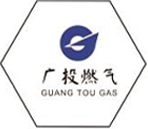
Nov . 20, 2024 15:40
Back to list
gas pressure regulator valve
Gas Pressure Regulator Valve An Essential Component in Gas Systems
In various industrial and residential applications, maintaining the appropriate gas pressure is crucial for safety and efficiency. A gas pressure regulator valve is an essential component that plays a vital role in controlling the pressure of gas supplied to appliances, machinery, and gas distribution systems. This article explores the significance, functionality, and types of gas pressure regulator valves.
Importance of Gas Pressure Regulation
Gas is widely used for heating, cooking, and powering various equipment. However, gas supplied from source pipelines can vary in pressure due to fluctuations in demand, temperature changes, or system malfunctions. If the pressure is too high, it can damage appliances, create safety hazards, and lead to inefficient operation. Conversely, if the pressure is too low, it may cause insufficient fuel delivery, leading to poor performance or non-operation of appliances. The gas pressure regulator valve ensures that gas is delivered at a consistent and safe pressure, protecting both the devices and individuals using them.
How Gas Pressure Regulators Work
A gas pressure regulator valve essentially functions as a control device that modulates the pressure of the gas flowing through it
. The operation of a gas pressure regulator can be granularly understood through its key components the inlet, outlet, spring, diaphragm, and adjustment mechanism.1. Inlet and Outlet The regulator has an inlet where high-pressure gas enters and an outlet where the gas exits at a controlled, lower pressure.
2. Spring and Diaphragm The diaphragm is a flexible membrane positioned within the regulator. When gas enters the inlet, it exerts pressure on the diaphragm. The spring applies a preset force that counteracts this pressure. The balance between the diaphragm pressure and the spring tension determines the flow of gas.
3. Adjustment Mechanism Many regulators have an adjustment screw that allows users to set the target outlet pressure. By adjusting the tension of the spring, users can calibrate the system to maintain the desired pressure, enhancing the performance of downstream equipment.
gas pressure regulator valve

When there is an increase in the inlet pressure, the diaphragm moves against the spring, which causes the outlet valve to close, reducing the flow of gas. Conversely, if there is a drop in inlet pressure, the spring expands, allowing more gas to flow through the outlet. This continuous adjustment mechanism helps maintain a steady output pressure.
Types of Gas Pressure Regulators
Gas pressure regulators are designed for different applications, and they come in various types
1. Single-Stage Regulators These are typically used in low-pressure applications. They reduce the inlet pressure to the outlet pressure in one step. Single-stage regulators are simple, compact, and cost-effective, making them suitable for household use.
2. Two-Stage Regulators Used in applications requiring precise pressure control, two-stage regulators lower the pressure in two stages, providing a more secure and stable output. The first stage reduces high-pressure gas to an intermediate pressure, and the second stage fine-tunes it to the desired pressure. This design is ideal for industrial settings or where variable gas demands occur.
3. Automatic Regulators These regulators automatically adjust their settings based on real-time demands, ensuring optimal pressure without user intervention. This feature is particularly useful in large facilities with fluctuating gas needs.
Conclusion
The gas pressure regulator valve is a critical device that ensures the safe and effective operation of gas systems. By maintaining consistent pressure, these regulators protect appliances, enhance performance, and reduce safety risks. Understanding the importance and functionality of gas pressure regulators helps users appreciate their role in energy use efficiency and safety in both residential and industrial environments. Proper installation and regular maintenance of these valves are essential to achieving reliable performance and longevity, making them indispensable in any gas-related application.
Next:
Latest news
-
Safety Valve Spring-Loaded Design Overpressure ProtectionNewsJul.25,2025
-
Precision Voltage Regulator AC5 Accuracy Grade PerformanceNewsJul.25,2025
-
Natural Gas Pressure Regulating Skid Industrial Pipeline ApplicationsNewsJul.25,2025
-
Natural Gas Filter Stainless Steel Mesh Element DesignNewsJul.25,2025
-
Gas Pressure Regulator Valve Direct-Acting Spring-Loaded DesignNewsJul.25,2025
-
Decompression Equipment Multi-Stage Heat Exchange System DesignNewsJul.25,2025

